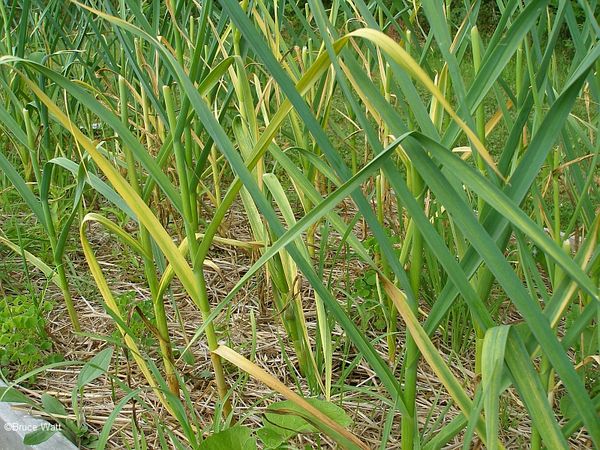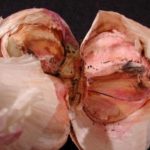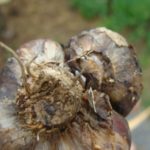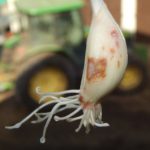Any gardener is upset when his plants grow and develop not as they should. In spring and summer, some gardeners are faced with a common problem - yellow garlic. To protect your planting from yellowing and preserve the future harvest after winter, you need to find out the reason why this happens and what to do.
Winter garlic can also be yellow and spring, as a rule, at the beginning it turns yellow with feathers and stem parts. In order to treat, it is necessary to treat or feed with special means.
Table of contents
Diseases of garlic and remedies for yellowing feathers and leaves
The main problems with this spicy vegetable fall into three major categories:
- Improper care
- Diseases
- Pests
The main diseases of garlic include the following:
- Rust
- Fusarium
- Perinosporosis
- Bacterial and neck rot
- Penicillosis
Rust and how to deal with it
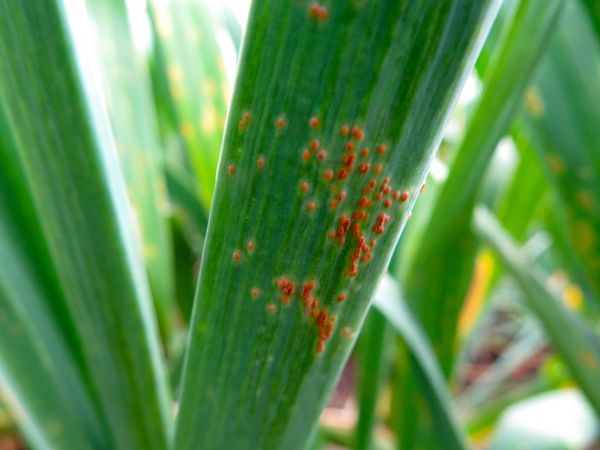
The most common garlic disease in Russia is rust. A serious problem that must be dealt with immediately.
Externally, the disease manifests itself as: spread small orange spots all over the leaves garlic. In appearance, “rust” looks like small, yellowish bumps of rusty color.If the gardener does not respond in time, the plant gradually turns black and dies.
By nature, rust - fungal disease. Most often, the disease has remained in the ground since last year. Therefore, as a preventive measure, it is not recommended to plant the plants at the same place every year. In addition, garlic beds should be located away from the beds with onions.
If rust-affected leaves are found, they are necessary. break off immediately. If the infection is massive, it is worth to use and process chemicals. They are applied strictly according to the instructions.
Fusarium - how to handle to fight
- Fusarium above the garlic
- The defeat of the head of garlic
Infection occurs through the soil and if you plant poor-quality seed. The disease develops at a temperature of 13-30 degrees and high humidity. Externally, the disease manifests itself as: garlic leaves start to turn yellow, dry out and die off. In this case, the roots rot, the development of the head stops and the plant dies.
As a preventive measure, it is necessary to control the condition of the planting material. You can also further disinfect and water the soil with special chemicals.
To combat the disease manifested it is necessary to use antifungal agents, according to the instructions or method.
Perinosporosis
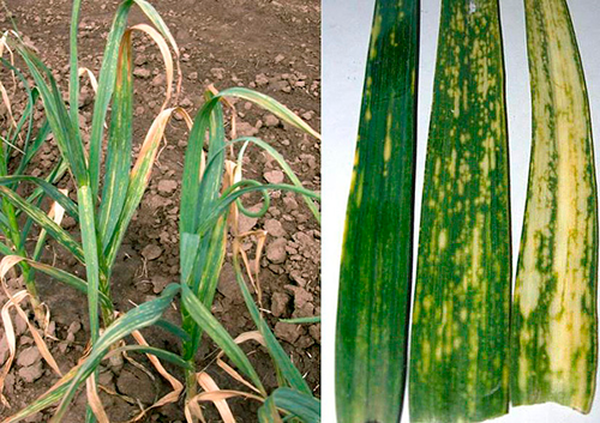
The national name of the disease - downy mildew. The disease has a fungal nature and is common in all regions of Russia. Peronosporaz is especially active when the humidity is high.
Externally, the symptoms of the disease look like focal lesion of leaves. At the same time, the growth and development of the vegetable slows down, the leaves change color and shape, and the flower stalks turn yellow.
To avoid contamination in your beds, you need to plant only healthy seed, monitor soil moisture. It is better to have beds with plants in solar and ventilated areas of your garden plot. If the disease still struck garlic, you need to use special tools.
Bacterial and neck rot
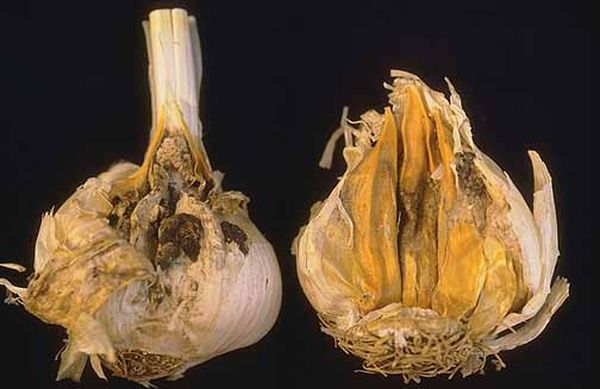
Bacterial diseases affect garlic less frequently than fungal ones. Neck rot strikes themselves teeth. To avoid this disease, you need plant vegetables every year in different places and monitor the health of the seed.
Also it is worth using special sprays for pest control. Insects can aggravate the disease and even sometimes are its source.
Penicillosis
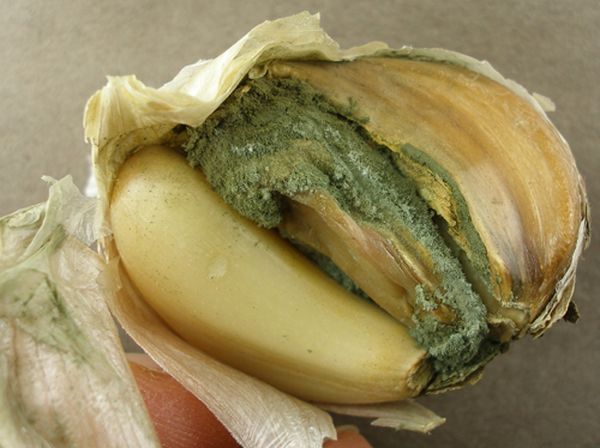
In the people, this disease is called green mold. The causative agents are fungi. The disease most often occurs during improper storage. Heads deteriorate and collapse from the inside.
Reasons why garlic can turn yellow in spring
In summer time yellowing of the leaves indicates its ripening. But, in the spring yellowness indicates problems.
There are main reasons for this phenomenon:
- early landing;
- frost;
- sour soil;
- lack of watering;
- pests.
Early planting and frost
Winter garlic often turns yellow. due to spring frosts. If spring garlic is planted too early, low temperatures can also strike it. Young sprouts of garlic are covered with a film - this protects them from hypothermia.

Sour soil
Spicy vegetable grows well and develops in the ground. with a neutral balance. Too acidic soil causes yellowing of the leaves. In addition, the earth should be loose and well pass oxygen.
You can reduce the acidity if you feed the soil with lime. The proportions of this additive are calculated based on the characteristics of the earth.
Insufficient watering
In young plants, yellowing of the leaves can be caused by a lack of moisture. In May - June, a vegetable is formed. At this time you need regularly loosen the soil and produce timely watering.
For watering a vegetable, use settled water, which is heated in the sun.
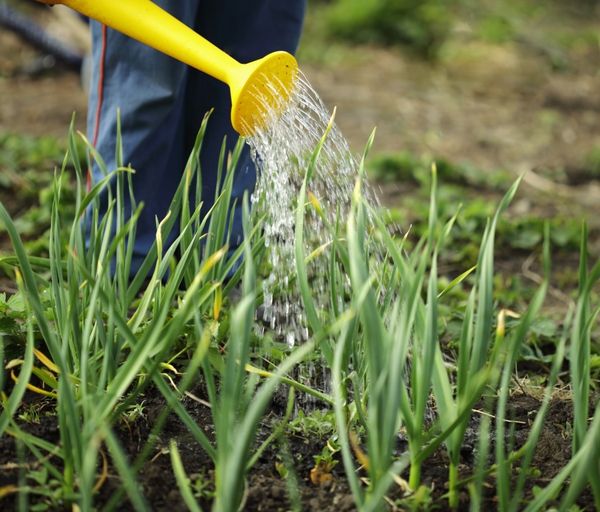
Pests
The most common insects that spoil garlic and onions are onion fly, nematode, root mite, tobacco thrips. They can cause irreparable damage to the crop of this spicy vegetable.
To avoid insect infestation, garlic is planted. every time on different beds. Before planting, the soil must be shed with disinfectant solutions. And at the first sign of a lesion - use special sprays that repel pests.
- Onion fly
- Nematode
- Consequences of the head lesion with mite
What to do if the leaves began to turn yellow
To prevent yellowing of plants, it is worth planting healthy teeth in the clean and disinfected soil. If planting is done in the spring, it is worth waiting for the temperature to stabilize so as not to expose the young sprouts to frosts. Proper care and timely detection of diseases will help to get a quality crop of this hot vegetable.
